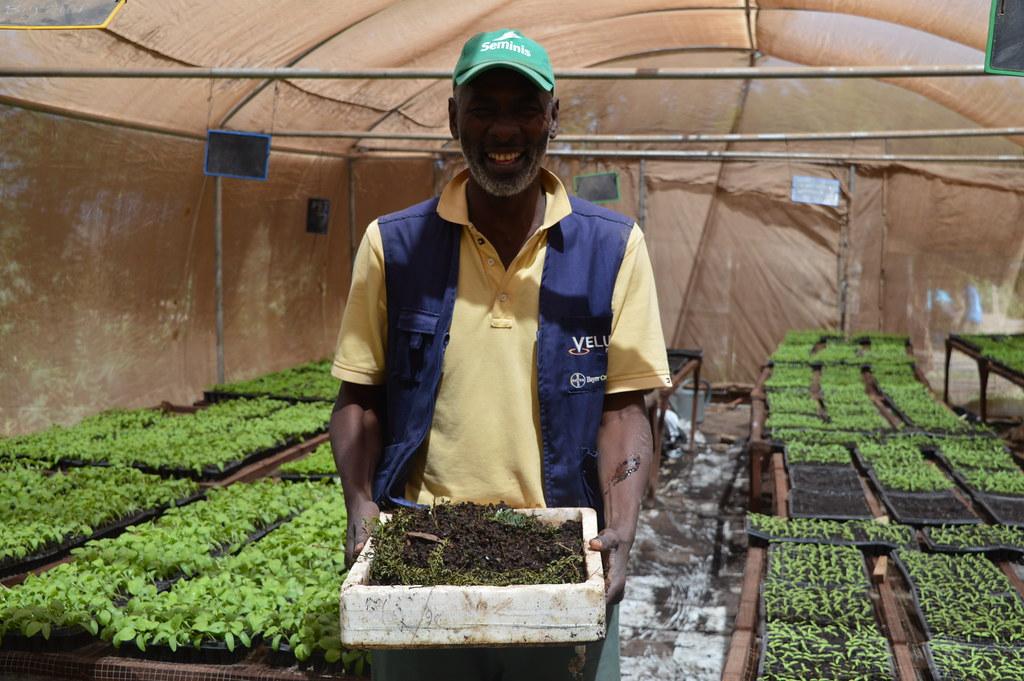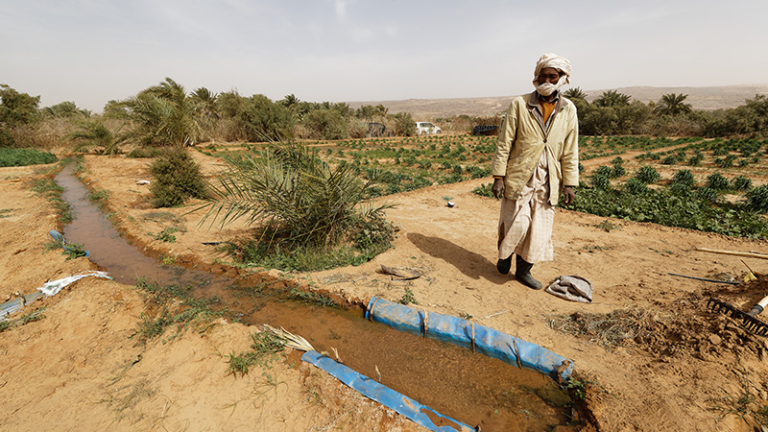Perspectives is a series that highlights emerging issues in the area of agri-SME and smallholder finance from the perspective of practitioners and thought leaders within and outside the SAFIN network. In this interview, Gerhard Coetzee, Customer Value Lead at CGAP, reflects on the evolution of the knowledge base in rural and agricultural finance, and shares insights for the way forward in a post COVID world.
Please tell us about yourself and your role at CGAP.
I joined CGAP in November 2013, responsible for our customer-focused work. I lead the customer value team at CGAP, and our work spans customer segments and insights, protection and value, and evidence and insights. I am also responsible for Gateway Academy, a digital learning platform. I support the development finance unit at the University of Stellenbosch Business School as an Extraordinary Professor. Before CGAP, I was Head of Inclusive Banking at Absa Bank (South Africa) responsible for its branchless banking proposition, founder and Director of the Centre for Inclusive Banking in Africa, Professor in Agricultural Economics at the University of Pretoria, technical lead and CEO of a consulting firm (owned by DAI). I had several senior roles at the Development Bank of Southern Africa. My specialization areas are development finance broadly, financial inclusion, and rural and agricultural finance.
How has the research agenda of CGAP evolved in recent times, and where do you see it likely to focus in the near future?
I see the work of CGAP in three phases. CGAP started in 1995, focusing on building the microfinance sector. Our work contributed to all aspects that would drive access to financial services through MFIs [microfinance institutions] and spanned strategy, governance, business models, and much more. In the 2005 book, Access for All, we asked two critical strategic questions. How can we decrease the cost to serve poor customers, and how can we scale outreach to the excluded and vulnerable?
In the second phase, we turned our attention to technology and specific digital finance services in our quest to solve these two challenges. We contributed work on innovative business models focused on digital finance, on how to create an enabling digital finance infrastructure, and the regulatory enablers required to make digital finance work better. Also, we focused on why and how customer-centric business models can play a role in the process anchoring DFS [digital financial services] in customer-centric approaches. We asked ourselves recently where to now, or in short, finance for what? Since we have seen much progress on access to financial services internationally, is it not the right time to again turn to the reason for using financial services?
In this third phase, we are continuing with our work on business models, digital infrastructure, and enabling policy and regulation. Still, now we filter our work in what it could mean for the customer. We argue that it could contribute to three areas of importance for poor people, namely income generation, access to essential services, and protecting standards of living. Our quest is to find ways in which we can contribute to the ability of poor people to capture opportunities and build resilience, using and leveraging financial services.
Are there themes or issues in rural finance where our collective knowledge base has improved in recent years?
We have much more focus on rural livelihoods, recognizing that agriculture is one aspect of rural livelihoods and should not be the only focus. We also succeeded in segmenting the rural poor, and in building pathways that provided better insights to focus rural and agricultural development efforts. This was helped by smallholder family-focused research in the form of national surveys and financial diaries that provided deep insights and, in the case of the nationally representative household surveys, also allowed us to do granular segmentation. Some of the insights emphasized what we knew, and some insights shined a light on areas we had not given adequate attention. An example of the latter is the vital role that rural traders play in the input supply system for smallholder families. In some areas, these traders are the only service providers who purchase produce and provide inputs. We should indeed look at the opportunities this reality brings in terms of distribution and ancillary services.
There is a general acknowledgment that agriculture is a crucial sector in creating opportunities and improving resilience. The rural development community has acknowledged this for a long time. Recently, we see much more integration in thinking and activity between the financial inclusion and agricultural development communities. This brings an opportunity for more innovation.
Solving rural and agricultural development challenges cannot be achieved by single focus efforts, e.g. only on finance, or only on production. We have to recognize the multi-faceted partnership-based efforts we require. We must tackle access to resources like land and water together with improved production, extension, and mechanization where needed, marketing and financial services, research, and enabling policy and regulation. We see several institutions and partnerships combining forces and delivering this collection of farmer support services. We need more of the same!
What are the issues or themes where practitioners and researchers in the field are still struggling the most with evidence gaps?
I would argue that the most evidence gaps are not about what we see, but instead the quest to understand why we see it – thus the understanding of the drivers of behaviour. We need to do much more to know why we see particular behaviours and trends. We fall short on learning from people on the ground, getting into their shoes and understanding their daily lives and challenges. This is particularly relevant to women in smallholder households and the social norms that influence their use of financial services and their ability to start a business, for example.
Although we understand rural smallholders better, we cannot use blanket approaches in designing services. We need to build on proper survey and segmentation work, to develop better services for women clients. To do this, we have to understand the norms that exclude women, from norms related to owning assets to those related to access to essential financial services. . Once we know the norms and other obstacles to women’s financial inclusion, we have to do something about it and be transformative in our approach; else, there will be no change. I often hear that it is impossible to change norms! It is imperative to chisel away at those that are most entrenched and transform those that we can.
In recent years, much has been written about the promise of “digitalization” in agricultural and rural finance. Where does this promise mostly lie, and where are the limitations?
The promise lies in driving down costs and improving outreach, particularly to women smallholders. In Africa last year, women were only 25% of registered users of digital agriculture solutions. The hope lies in using technology to make innovative business models work, and this requires the creation of digital ecosystems. However, many challenges remain:
The segmentation I mentioned earlier also helped us to focus on opportunities to improve the lives of all sub-segments. I believe most efforts in agricultural finance focus on those segments where commercial agricultural activity has a chance to succeed. Unfortunately, this leaves about 60% or the most impoverished 300 million smallholder families with less attention, and especially excludes women smallholders. Yes, some entities focus further down the poverty ladder, but we need more emphasis and resources. The COVID-19 impact on food security and food systems, especially in fragile areas like the Sahel, requires more effort in building resilience and supporting coping strategies. Digital financial services and digital support strategies that improve information access and use can play a significant role.
Our future progress in digital financial services will be reliant on how well we can forge workable partnerships and on-ground collaborations. Rural and agricultural development challenges and the digital financial tools required to support them rely more and more on cross-disciplinary partnerships. Consider the link between rural savings groups and formal financial institutions; between suppliers of agricultural services and inputs and those that distribute and offer digital financial services; between community-based organizations like MFIs, SACCOs [Savings and Credit Cooperative Organizations], financial and other cooperatives, and MNOs [Mobile Network Operators].
Digital financial services cannot operate without the digital finance infrastructure. Here we need a joint effort. If we can position rural traders, MFIs, SACCOs, and other community-based entities that serve the rural poor to gain from digital services, then we can build the digital infrastructure required, and simultaneously incentivize demand for and supply of digital financial services.
A word of caution: We have to build these systems in such a way that we solve consumer protection issues and diminish designs that drive the digital divide, from day one. This is especially important to include more women in digital financial services. The worldwide gap of 9% between access for men and women must be eradicated. Once again, a collective effort is required.
Is COVID-19 changing narratives and practices in rural finance and what can we expect as the crisis continues to unfold?
It brought food insecurity into the limelight, which will help with addressing it. COVID-19 shined a light on both sides of the food security coin, the production of food as well as the ability to obtain it. On the production side, it questioned the resilience of the food system. Some argue that we have a resilient and innovative food system across the globe. Still, this argument is weak at the disaggregated level.
I alluded to the food insecurity situation in the Sahel, and the same is true where transport services have faltered, where input supplies have broken down, and especially where people’s income dried up overnight. These realities must drive our dedicated focus on those that are most vulnerable in rural areas, and I do believe that is happening.
Lastly, COVID-19 is but one of many challenges faced by poor people in rural areas. We have to leverage the attention to also address these other challenges, including desert locusts, climate change and much more.
Gerhard Coetzee leads the customer value team at CGAP, including customer segments and insights, protection and value, and is also responsible for Gateway Academy, a digital learning platform. He is an Extraordinary Professor at the University of Stellenbosch Business School. Before CGAP, Mr. Coetzee was Head of Inclusive Banking at Absa Bank (South Africa), founder and Director of the Centre for Inclusive Banking in Africa, Professor in Agricultural Economics at the University of Pretoria, technical lead and CEO of a consulting firm (owned by DAI) and had several senior roles at the Development Bank of Southern Africa.

